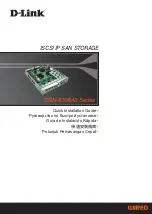
3 of 4
Top view of Indoor Sensor
Small slot for
screwdriver
Wall Stud
To control
terminals
Indoor Sensor
terminals
STEP TWO
REMOVING THE FRONT COVER
Note:
The temperature sensor (thermistor) is built into the enclosure.
To remove the indoor sensor front cover, place a small screwdriver or similar object
into the small hole located in the top of the enclosure. Push the screwdriver against the
plastic flap and pull the top of the front cover so that it pivots around the bottom edge
of the mounting base.
STEP THREE
MOUNTING USING AN ELECTRICAL BOX
The Wall Plate is mounted onto an electrical box using the supplied screws.
Ensure that at least one of the arrows molded in the plastic points upwards. Also
ensure that the electrical box is properly insulated and protected from cold drafts.
All required wiring must be pulled through the existing top left hand hole of the
wall plate.
STEP FOUR
MOUNTING THE SENSOR
Electrical Box Mounting
Insert the wiring through the hole provided in the back of the sensor and connect them
to the wiring terminals of the GEO 360. Attach the sensor to the wall plate using the
supplied screws.
Do not over tighten screws as the plastic molding may strip.
The Indoor Sensor
should be installed on an interior wall of the desired zone to be controlled. Do not
mount the sensor in a location that may be affected by localized heat sources or cold
drafts. It may be necessary to install a draft barrier and / or insulation behind the
enclosure in order to prevent air from blowing through the wiring hole and affecting
the sensor reading.
Surface Mounting
For surface mounting, mount the Indoor Sensor directly to the
wall using two 25 mm (#6-1”) screws. The screws are inserted
through the mounting holes and must be securely fastened to
the wall. If possible, at least one of the screws should enter a
wall stud.
STEP FIVE
WIRING THE INDOOR SENSOR
Run 1.0 mm
2
- 2 core cable or similar wire between the Indoor Sensor and the terminals on the control. Ensure that all wires are
stripped to a length of 9 mm (3/8”). Insert the wires through the hole provided in the back of the Indoor Sensor enclosure and
connect them to the indoor sensor terminal block. Do not run the wires parallel to telephone or power lines. If the Indoor Sensor
wires are located in an area with strong sources of electromagnetic noise, shielded cable or twisted pair should be used or the
wires can be run in a grounded metal conduit. If using shielded cable, one end of the shield should be connected to the
Com
terminal on the control and the other end should remain free. The shield must not be connected to earth ground. Follow the
sensor testing instructions in this brochure and connect the wires to the control.
STEP SIX
INSTALLING THE FRONT COVER
The Indoor Sensor front cover is installed by aligning the hinges on the bottom of
the front cover with the bottom of the sensor mounting base. The front cover is then
pivoted around the bottom hinge and pushed against the mounting base until it snaps
firmly into place.



































